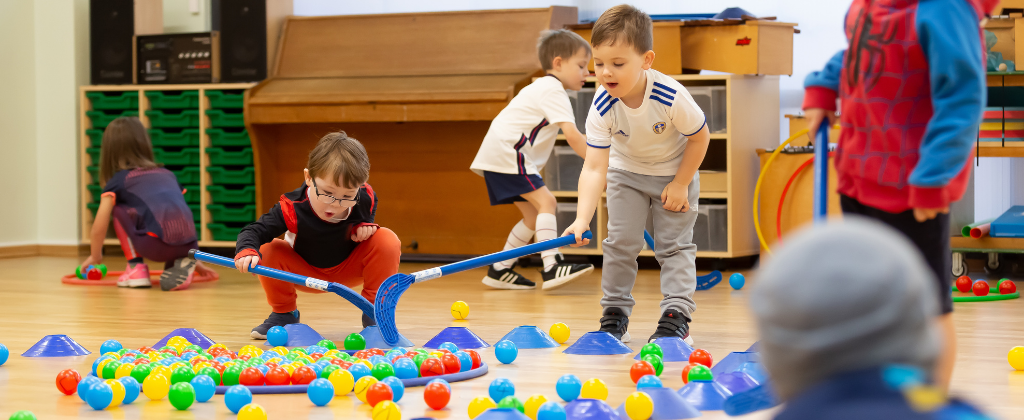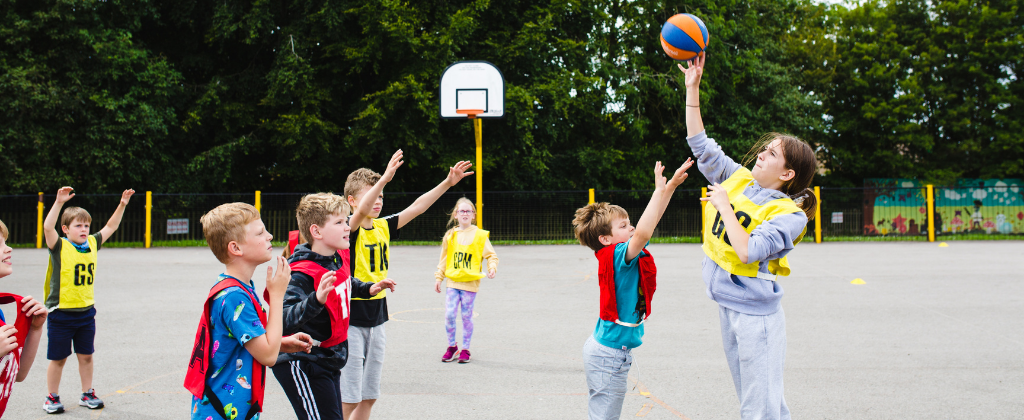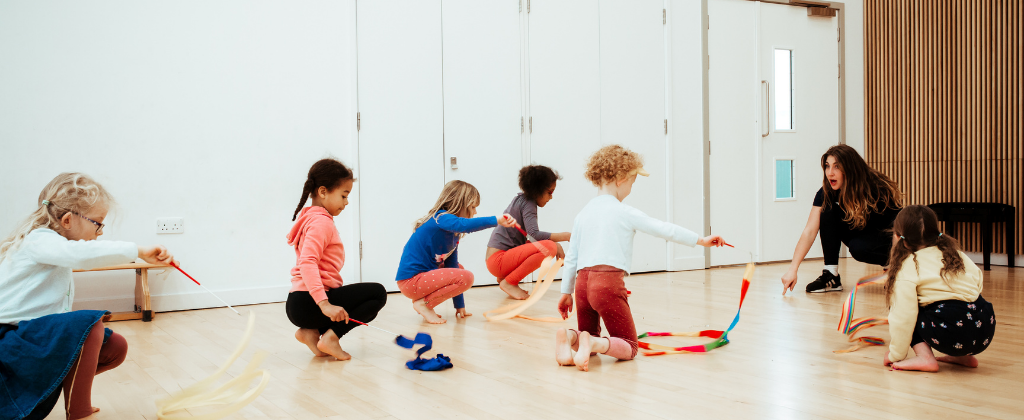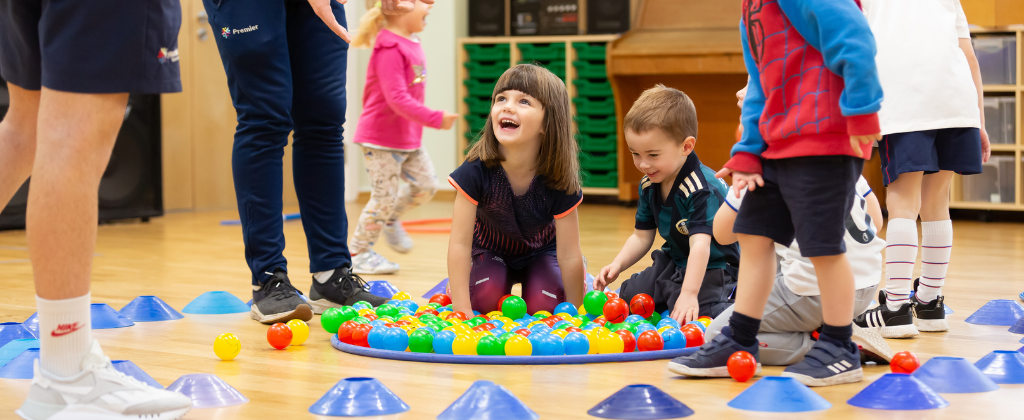How to Keep Kids Active Over Winter
While daytime is shorter, colder and wetter in winter, it’s still important to keep kids active every day. However, we understand there are fewer opportunities to get young children outside and moving than in summer.
That’s why we’ve put together some tips and activities that will help you to keep your kids active over winter.
How active kids should be in their daily life
How active kids should be each day – including in winter
Exercise is essential, no matter the season.
According to NHS guidelines, kids aged between 5 and 18 should be getting at least 60 minutes of moderate or vigorous activity every day. This activity should break up time spent not moving and be varied in types and intensities.
Participating in regular physical activities has a number of benefits. Not only will it get kids moving, but it will help kids maintain strong muscles and bones, build cardiovascular strength, reduce the risk of obesity and type 2 diabetes, and improve mental health. Whether it’s creative games, activities inside or fun outside time, staying active also boosts self-esteem, social skills, and athletic ability.
In recent years, especially with the pandemic and lockdowns, making physical activity part of the daily routine for young people and their families has become increasingly important. Our recent survey about child wellbeing found that during lockdowns, 82% of children fell short of the recommended hour of exercise a day.
Tips for improving a child’s physical activity in the cold months
While it’s so cold outside, playing video games or spending hours watching TV can be more appealing to children than taking a bike ride or playing sports.
Whatever your child’s age, here are some top tips to help get the balance right:
- Rather than telling kids they can’t watch TV, encourage them to do jumping jacks or balancing exercises in the ad breaks. If there are no commercial breaks, set a timer for fitness breaks. If you’re looking after more than one child, why not turn this into a fun competition?
- Don’t feel pressured to block off a full hour for exercise. If you’ve got a busy schedule, aim for several 15-20 minute bursts of movement throughout the day.
- Encourage a positive attitude for sports and fitness by keeping physical activity fun. Remember that most kids enjoy exercise more when it is part of play.
- Children learn from their role models and parents. If they regularly observe their parents or other adults keeping physically active as part of family life, they’re more likely to get involved and create the same healthy habits.
- Make plans with their friends that encourage them to all get active while having fun. This could be a team sport such as basketball, or simply regular outdoor physical activity.
Winter activities for kids
To help your kids avoid excessive, couch-bound screen time this winter, look for a fun physical activity that will help make movement a part of their everyday routine.
Here are 5 suggestions to keep kids active this winter:
1. Jive bunnies
Based on the hand jive dances from the ’50s, the jive bunnies activity is a fun way to get your child dancing.
First, choose a suitable song such as Rock Around the Clock or Crazy Little Thing Called Love.
Then, it’s time to teach your child the different hand jive moves. We’d suggest introducing the moves one by one and then combining them all together at the end.
Here are some basic hand jive moves you can use to create the dance sequence:
- Slap your thighs twice then clap your hands twice
- Criss Cross your hands four times, with your right hand underneath twice, then swap to your left hand underneath twice (hands should not touch).
- Make hands into fists and position as if you are grabbing a pole. Right fist at the top, knock them together twice, then swap to the left hand at the top and knock together twice.
- Give a thumbs up with both hands. Sway to the right and point your thumb over your shoulder twice, then sway to the left and point your thumb over your shoulder twice.
Once your child has put them all together, they can try dancing with a partner to music or adding their own start and ending pose to the dance sequence.
2. Leaping frogs
Leaping frogs is a reliable way to get children engaged and out of breath. All you will need is something to mark out the course on the floor; whether that’s with masking tape, hula hoops or coloured plastic cups.
Start by setting up a course for leaping frogs. Every player now takes turns to leap their way from one side of the course to the other, only stepping on the areas of the floor where they’re allowed to.
If they touch the ground they’re not meant to, that child goes to the back of the queue to have another try.
To make this activity different each time, you can change the course layout or send children across the course in pairs and have them leapfrog each other all the way across. It’s a brilliant way to build strong muscles and improve balance.
3. Mindful dancing
A slightly different dancing activity, mindful dancing is a variation on the classic game of musical statues.
Choose or create a playlist of upbeat pop music that your kids can easily dance to. Before you start, explain to the kids that everyone can move and dance however they feel but need to freeze when the music stops.
However, how this differs from the original game is that nobody is eliminated and each time they freeze, there may be a prompt.
After the first freeze, say: “next time you freeze, try to…” and choose a prompt. Prompts may include:
- Take a moment to notice how different it feels being still in the middle of dancing
- Make the shape of the first letter of your name
- Lift one foot off the floor and stand on one leg
- Choose a pose that reflects how the song makes you feel
- Pick an animal (no dogs or cats allowed) and make the shape of it
- Carry on dancing – but as slowly as possible
After playing the game, take time to ask them how they felt and what they noticed whilst playing.
4. Volcanoes and craters
A competitive and inclusive activity, all you need is an open space and more plastic cups than players.
Lay out the cups in the middle, half face up and half face down. Then, split the children into two teams.
Team 1 will aim to turn the cups face up (to make craters) and team 2 will try to turn the cups face down (to make volcanoes).
Set a timer and once it stops, count up the number of volcanoes and craters to find the winning team.
To make the games harder, introduce the rule that all players have to sidestep back to their team’s side after each cone they turn. And, if a team is constantly winning, mix up the players.
5. Animal dodges
Animal dodges is a great activity to improve concentration in space-limited areas.
To prepare, have the children spaced out throughout the room and explain the rules of the game. Quite simply, when you call out the name of an animal, they need to perform a dodge as though they were that animal dodging a ball.
You may wish to introduce your own animals, but we’d suggest starting with:
- Kangaroo – jump up into the air, as if they’re jumping over something
- Crab – sidestep quickly (but make sure they’re not bumping into anybody else)
- Armadillo – duck into a ball, as low as they can go.
Start with a warm-up by saying each animal and make sure the kids all understand the movements. Then, when they’re ready, start to mix up the animals so they can’t predict which is coming next.
For more physical activities, visit our Stay Active resources. Designed specifically to help keep your child physically and mentally active, our Stay Active resources are fuss-free and easy to integrate into your day in any home, from the family kitchen to the living room or garden.





